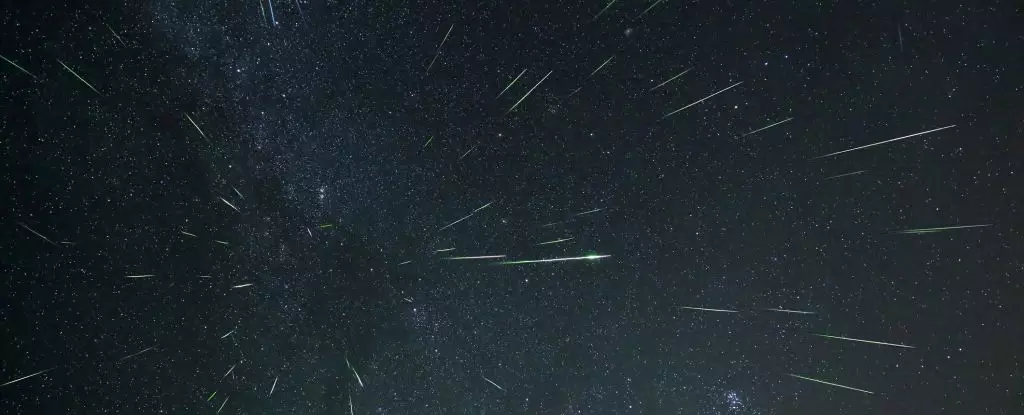As we step into the enchanting months of April and May, stargazers find themselves on the brink of witnessing two of the most spectacular meteor showers of the year. The Lyrids and Eta Aquariids not only promise stunning celestial displays but also serve as a reminder of the universe’s vast beauty and mystery. Observing these events is more than just gazing at falling stars; it’s an invitation to engage with the cosmos, fostering a deeper appreciation of our place within it.
The Lyrids: A Dazzling Display Born of Cometary Origins
Beginning on April 17 and continuing until April 26, the Lyrid meteor shower is set to steal the spotlight with its peak occurring on the night of April 21 to 22. This annual phenomenon results from Earth passing through the debris field left by Comet C/1861 G1, also known as Thatcher, which has a remarkable orbital period of about 422 years. With its radiant located near the constellation Lyra, the Lyrids are a spectacle primarily visible from the northern hemisphere.
What makes this meteor shower particularly intriguing is that during ideal conditions—a moonless sky—enthusiasts can expect to witness between 10 to 15 meteors per hour. However, this year, a waning moon, approximately 40% full, will pose challenges by washing out fainter meteors. Nonetheless, the night of April 21 promises to be an optimal viewing time before lunar brightness overtakes the sky. Perseverance is key; despite the challenges, those willing to brave the early morning chill may be rewarded with a glimpse of these celestial jewels.
Embracing Chances: The Eta Aquariids and Their Gem-Like Trails
Transitioning into the heart of May, we welcome the Eta Aquariids, whose radiant lies in the Aquarius constellation. Running from April 20 to May 21, with peak activity expected around May 2 and 3, these meteors originate from the illustrious Halley’s Comet, which orbits our Sun once every 76 years. One of the mesmerizing aspects of the Eta Aquariids is the volume of meteors they deliver. Optimal viewing conditions can lead to sightings of 50 to 60 meteors per hour in the southern hemisphere, making it an astronomical feast that no skywatcher should overlook.
However, observers situated in the northern hemisphere must temper their expectations, as they may catch only a fraction of the performance—perhaps 20 meteors per hour. This disparity highlights the interesting geographic nuances of meteor showers and underscores the notion that stargazing is not merely a universal activity; it is intricately tied to one’s location on Earth.
Preparing for the Celestial Experience
Viewing meteor showers doesn’t necessitate specialized equipment; instead, the right location and mindset can create a memorable experience. A spot far away from the city’s light pollution, a cozy blanket, and an unclouded sky are all one requires to make the most of these ethereal displays. The anticipation of seeing meteors streak across the night sky—each a fleeting reminder of the cosmic dances we are a part of—is worth the effort.
For aspiring viewers, awareness of local weather conditions and timing is critical; tools like the Time and Date website offer insights on optimal viewing times specific to one’s locality. Similarly, downloading the International Meteor Organization’s yearly meteor calendar provides a roadmap for future celestial events, ensuring that no spectacular display goes unnoticed.
The Appeal of Cosmic Wonder
As the Lyrids and Eta Aquariids light up the sky, they inspire more than mere awe; they evoke curiosity about the universe and fuel our thirst for knowledge about celestial mechanics. Each meteor witnessed is not just a fleeting moment of beauty but a vivid connection to a larger narrative—the story of our solar system and the myriad wonders it hosts.
Meteor showers encourage us to take pause, to look up, and to recognize the significant forces at play in our galaxy. They prompt reflection on our earthly existence while fostering a sense of community—sharing the experience with friends, family, or fellow stargazers adds a layer of collective joy in this universal spectacle. So, as we gear up for the meteor showers of April and May, let us also embrace the wonder of the night sky, for it holds more secrets and splendor than we can imagine.

